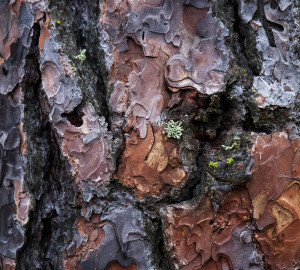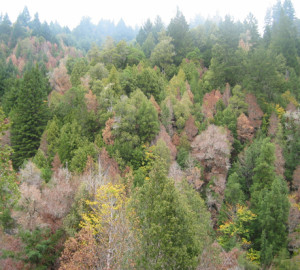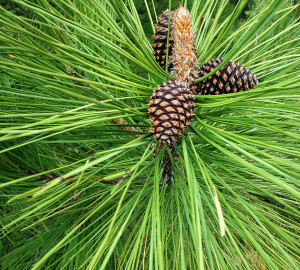
I don’t know about you, but I grew up having a Douglas fir tree in my house at the holidays so that is what I get as an adult. I know others that love Noble firs, blue spruces or pines. Thinking about the different variety of holiday trees makes me think about the different conifers that share the forests with our mighty coast redwoods and giant sequoias. Often we concentrate so much on our magnificent state trees that we look past the other trees that stand tall next to them.
The big question is how to tell these trees apart. So today we travel to the giant sequoia forests of the Sierra Nevada to introduce you to the great white fir, sugar pine and ponderosa pine.
White Fir
These remarkable trees can be up to 200 feet tall and 6 feet across. Their needles are in a spiral on a shoot and sweep upward. Their cones are 6 to 12 centimeters long and rounded on top. They make wonderful Christmas trees and have a delightful smell.
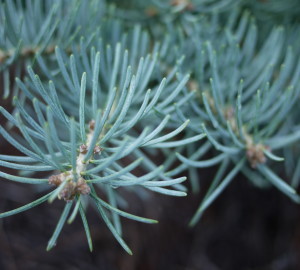
Sugar Pine
These trees are known for their cones, which can be up to 12 inches long. They can also grow to be over 200 feet tall and between 400-500 years old. They have long, thin needles that are bundled in groups of five.
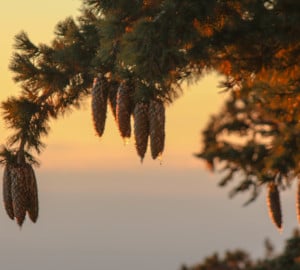
Ponderosa Pine
This is one of my favorite trees and it’s easily recognizable by its bark. It has an orangey-reddish bark that looks kind of like large puzzle pieces put together. Ponderosa pines can grow up to 160 feet tall and live for 600 years. They are probably most noticeable for their distinct smell. Stick your nose in a crevice in the bark and you get a whiff of sweet butterscotch or vanilla.
